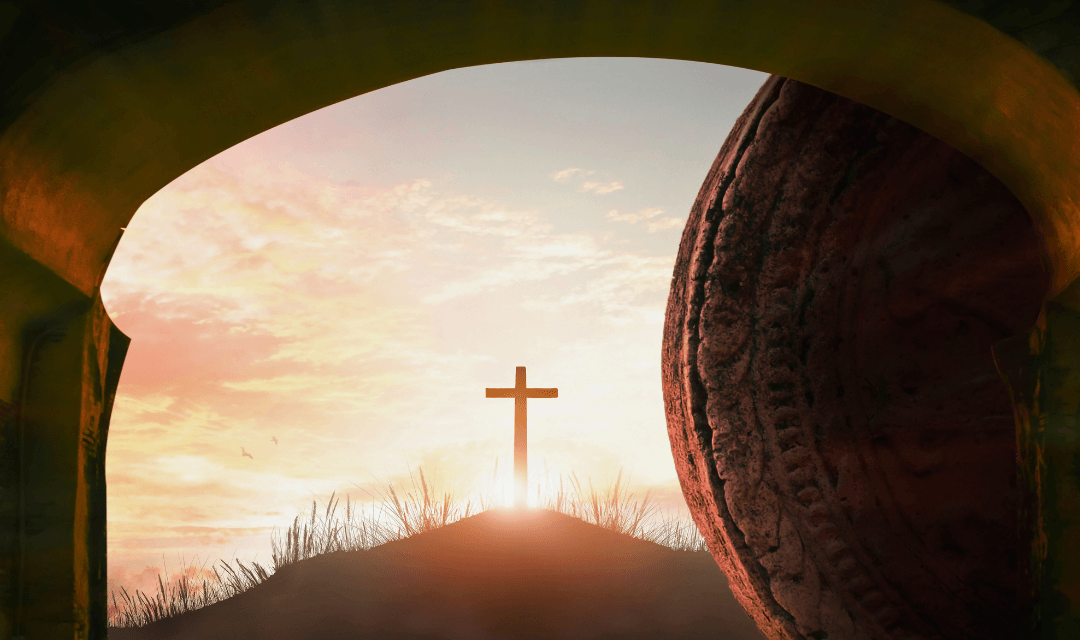By Hank Hanegraaff
The physical resurrection of Jesus Christ constitutes the very capstone of our faith. Without it, Christianity crumbles. As such, those who take the sacred name of Christ upon their lips must be prepared to defend its historicity. To make the process memorable, I’ve developed the acronym F-E-A-T. It will serve as an enduring reminder that the resurrection of Jesus Christ is the greatest feat in the annals of recorded history. Each letter will serve to remind you of an undeniable fact of the resurrection.
FATAL TORMENT. The fatal suffering of Jesus Christ as recounted in the New Testament is one of the most well-established facts of ancient history. Even in today’s modern age of scientific enlightenment, there is virtual consensus among New Testament scholars—both conservative and liberal—that Christ suffered fatal torment. Believing Jesus swooned—rather than suffered fatal torment—stretches credulity. It means Christ survived six trials, suffered scourging, survived seven-inch iron spikes, survived a spear wound in His side and then single-handedly rolled away an enormously heavy tombstone, subdued armed guards, strolled around on pierced feet, and seduced His disciples into communicating the myth that He had conquered death while living out the remainder of a pathetic life in obscurity.
EMPTY TOMB. As with Christ’s fatal torment, liberal and conservative New Testament scholars alike agree that the body of Jesus was buried in the private tomb of Joseph of Arimathea. As a member of the Jewish court that convicted Jesus, Joseph of Arimathea is unlikely to be Christian fiction. And considering that females in ancient Judaism were routinely considered little more than chattel, the empty tomb accounts provide powerful evidence that the gospel writers valued truth over cultural correctness. Not only so, but the earliest Jewish response to the resurrection presupposes the empty tomb; and in the centuries following the resurrection, the fact of the empty tomb was forwarded by Jesus’ friends and foes alike. As the late liberal scholar John A. T. Robinson of Cambridge conceded, the burial of Christ “is one of the earliest and best attested facts about Jesus.” Christianity simply could not have endured an identifiable tomb containing the remains of Messiah.
APPEARANCES. One thing can be stated with iron-clad certainty: the apostles did not merely propagate Christ’s teachings; they were absolutely certain that He had appeared to them in the flesh after His crucifixion, death, and burial. Although two thousand years removed from the actual event, we too can be absolutely confident in Christ’s post-resurrection appearances. In 1 Corinthians 15:3–7, the apostle Paul reiterated a Christian creed that scholars of all stripes conclude can be dated to mere months after Messiah’s murder. The creed, which unambiguously affirms Christ’s post-resurrection appearances, is free from legendary contamination and, ultimately, is grounded in eyewitness testimony. No doubt the most amazing post-resurrection appearance involves Jesus’ brother* James. Before Christ’s appearances, James was embarrassed by all that his brother represented. Afterward, he was willing to die for the notion that his brother was God. The question that inevitably arises is this: What would it take for someone to willingly die for the notion that one of his family members is God? The answer can be nothing other than the post-resurrection appearances of Messiah.
TRANSFORMATION. What happened as a result of the resurrection is unique in human history. In a span of a few hundred years, a small band of seemingly insignificant believers succeeded in turning an entire empire upside down. Within days of encountering the resurrected Christ, not merely twelve, but thousands of people willingly surrendered their spiritual and sociological traditions. The Sabbath was transformed into a first-day-of-the-week celebration of the rest we have through Christ who delivers us from sin and the grave. Not only so, but after the resurrection, followers of Christ suddenly stopped making animal sacrifices. They recognized the new covenant as better than the old covenant because the blood of Jesus Christ was better than the blood of animals. The Jewish rite of Passover was radically transformed as well. In place of the Passover meal, believers began partaking of the Eucharist. In like fashion, baptism took on new meaning. Prior to the resurrection, converts to Judaism were baptized in the name of Yahweh, God of Israel. After the resurrection, converts to Christianity were baptized in the name of Jesus. In doing so, believers equated Jesus with Israel’s God.
Of one thing I am certain: if twenty-first-century Christians would fully apprehend the reality of the greatest F-E-A-T in his- tory, they—like their first-century counterparts—would turn the world upside down.
Adapted from Resurrection
For what I received I passed on to you as of first importance: that Christ died for our sins according to the Scriptures, that he was buried, that he was raised on the third day according to the Scriptures, and that he appeared to Peter, and then to the Twelve. After that, he appeared to more than five hundred of the brothers at the same time, most of whom are still living, though some have fallen asleep. Then he appeared to James, then to all the apostles, and last of all he appeared to me also, as to one abnormally born.
1 Corinthians 15:3–8
*In Hebrew and in Greek the designation “brother” is appropriately used to refer to a relative as well as to a blood brother. Jacob and Laban are called brothers, though Laban was the uncle of Jacob. And Abraham and Lot are called brothers (adelphoi) in the Septuagint or Greek rendering of the Old Testament used by the New Testament apostles. Therefore, there is ample precedent for using the Greek adelphos to designate a relative rather than blood brother.
***Note the preceding text is adapted from The Complete Bible Answer Book: Collector’s Edition: Revised and Expanded (2024). To receive for your partnering gift please click here. ***
